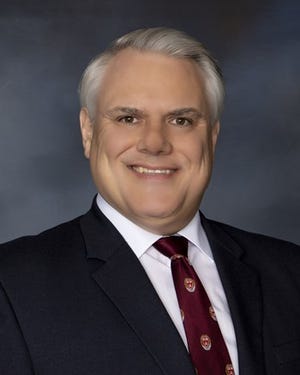If 2018 was the year of women running for office, 2020 is shaping up to be the year of women in politics across the board. Not only are women running once again in record numbers, but more women than ever are participating in the political process overall. With higher numbers of Republican women candidates and a historic turnout of six women in the presidential primary, women’s inclusion in the political process is at an all-time high.
AUTHENTICITY IN CANDIDACY
Far more frequently, women were able to run as their “authentic selves,” said Amanda Hunter, research and communications director at the Barbara Lee Family Foundation. These women could campaign as individuals and share their personal stories, not just their resumes. The advice from decades ago to prospective women politicians — to “fit into a template that was built for men and stand at a podium in a boxy suit,” according to Hunter — is long gone. Now, Hunter says, women can share details of their lives and show voters how they can relate to families and understand “kitchen table issues.”
“THERE’S A WHOLE GENERATION GROWING UP THAT WON’T REMEMBER A PRESIDENTIAL RACE THAT DID NOT LOOK DIVERSE, THAT DID NOT HAVE WOMEN AND PEOPLE OF COLOR.”
– Amanda Hunter, research and communications director, Barbara Lee Family Foundation
The year 2018 gave us a glimpse that authenticity can be quite successful. Voters believe that women are in touch with their lives, and research shows that voters are frustrated with the status quo and are “more likely to vote for a woman if they believe that women will serve differently in politics,” said Hunter.
The Barbara Lee Family Foundation’s research found that women are more politically involved than ever, with a majority of women saying they’re paying attention — and millennial women and women of color leading the charge. In some of the early primary states, turnout was largely driven by women, especially suburban women and mothers, Hunter said.
THE RISE OF THE REPUBLICAN FEMALE CANDIDATE
The rate of women running for office is pacing for another record-setting year, and a strong undercurrent is the surge in Republican women, which is seeing significant growth in 2020.
While 2018 set the record for female candidates overall, it was buoyed in large part by Democratic women, who were incredibly motivated after the 2016 election. For Republican women in 2018, there wasn’t the same momentum. In fact, Republicans lost ground in terms of representation of women in the House.
The tune is different in 2020, with Republican women candidates pacing toward a record-setting year. Still to be determined, however, is how successful they will be. Initial analysis from the Center for American Women and Politics (CAWP) at Rutgers University shows that Republican women candidates aren’t meeting with as much early success as their Democratic counterparts. Slightly less than 30% of nonincumbent Republican women who ran for the U.S. House on Super Tuesday either won their races or advanced to runoff elections, compared with 58% of nonincumbent Democratic women candidates. In open seat primaries, Democratic women also fared better, with 50% either winning or advancing, compared with only 19% of Republican women.
And while the percentages are up for Republican women candidates, Democratic women candidates are still running in greater numbers. In fact, Democratic female candidates are pacing to surpass 2018’s record-setting numbers.
THE NEW FACE OF THE PRESIDENCY
Strides weren’t made in 2020 politics in legislative races alone. The number of women candidates in the presidential primary was unprecedented. Senator Elizabeth Warren. Senator Amy Klobuchar. Senator Kirsten Gillibrand. Senator Kamala Harris. Representative Tulsi Gabbard. Author Marianne Williamson. Never before had America seen six women on the same presidential debate stage. In fact, prior to this year, only five women total had ever set foot on that stage, and they were always the only woman in the group.
“THE ELECTABILITY QUESTION WAS NONSTOP IN THIS CYCLE IN THE MEDIA. THAT DRUMBEAT KEPT GOING ON AND ON AND IT ALMOST BECAME A SELF-PERPETUATING CYCLE. IT TAPS INTO ANXIETY THAT VOTERS HAVE, AND IT BECAME SUCH A CIRCULAR ARGUMENT.”
– Jean Sinzdak, associate director, Center for American Women and Politics
The six Democratic women vying for the presidency “challenged stereotypes and set a new example of what women in office can look like,” said Hunter. What’s more, “having multiple women in the race removed the tokenism and allowed each woman to run as herself, rather than running as ‘the woman’ and tacitly having to speak for her gender.”
While none of the women made it to the final rounds of the primary, the nation saw their authentic selves, the high bar on which they operated their campaigns — and the double standards they faced.
Warren, for example, “drove conversations around policy, had endless selfie lines and enthusiasm, and yet she didn’t really receive credit for what she did well,” said Hunter. “She only received criticism for any perceived mistakes.”
And women candidates had to navigate the impossible challenge of the“electability” factor.

“The electability question was nonstop in this cycle in the media,” said Jean Sinzdak, associate director of CAWP. That organization received countless calls from the media wanting to discuss whether the female candidates were electable. “That drumbeat kept going on and on and it almost became a self-perpetuating cycle,” noted Sinzdak. “It taps into anxiety that voters have, and it became such a circular argument.”
Warren herself pointed out the hypocrisy of questioning her electability when, in the January 2020 debates, she noted that she and Klobuchar were the only two candidates on the stage who had never lost an election.
“There’s still such a gendered stereotype of what a candidate looks like that voters have an imagination barrier when it comes to supporting a woman,” said Hunter.
And those gendered stereotypes create extra challenges for women candidates. “Women have to be strong but not tough; they have to be likeable, which is subjective, and it’s a whole level of burden that men don’t face,” said Hunter. This is because voters will still vote for a man they don’t like if they believe he’s qualified, but they won’t vote for a woman they do not like, according to Hunter.
And while that stereotype is deeply entrenched, perceptions are changing, particularly with the next generation. “There’s a whole generation growing up that won’t remember a presidential race that did not look diverse, that did not have women and people of color,” Hunter noted.
In fact, the Barbara Lee Family Foundation’s research shows that eight in 10 voters reject the notion that America is not ready for a female president. In a series of hypothetical elections, the foundation also found that all variety of women candidates — Asian American, black, Latina, lesbian, white, Democrat, or Republican — were successful in either winning or tying her ballot against a straight white man of the opposite party.
“WOMEN HAVE TO BE STRONG BUT NOT TOUGH; THEY HAVE TO BE LIKEABLE, WHICH IS SUBJECTIVE, AND IT’S A WHOLE LEVEL OF BURDEN THAT MEN DON’T FACE.”
– Amanda Hunter, research and communications director, Barbara Lee Family Foundation
Yet with the global pandemic of COVID-19 increasing in severity throughout the primary season, Sinzdak has considered the fact that many Democrats near the end reverted to a traditional candidate.
“What they’ve known throughout hundreds of years of history with only one exception is an older white man,” she said. Joe Biden’s surge, in the wake of a global crisis, could be an example of voters reverting to “something tried and true,” said Sinzdak.
COVID-19’S IMPACT ON POLITICS
That crisis upended the entire spectrum of the political process. Across the country, primaries were postponed or restructured to mail only. As of this writing, 18 states and Puerto Rico have made adjustments to their primaries.
All current campaigns are now reassessing how to move forward, looking to pivot to digital platforms and remote models. Sinzdak wonders whether female candidates will be able to adapt more quickly to social platforms, where women in general tend to be more active. She also considers whether the anonymity of online campaigning might be an equalizer for women candidates.
Hunter wonders whether seeing female governors and mayors front and center making tough decisions and standing up for their constituents in times of crisis may influence voters’ opinions of them and women’s abilities in an executive office. Governors Gretchen Whitmer, J.D., of Michigan; Kate Brown, J.D., of Oregon; Kristi Noem of South Dakota; and Janet Mills, J.D., of Maine have all received media coverage for their actions during the crisis.
Another consideration is how this pandemic may influence women’s decisions to run for office in the future. Hunter noted there’s already been much attention put on how the pandemic has disproportionately affected women in a number of ways, including women doing more of the emotional labor in families and the “unpaid second shift” of taking care of family members. “That could spur more women to run for office in coming cycles or activate more women to come to politics,” Hunter said.
Sinzdak agreed that women tend to be more motivated by health, well-being, and personal economic issues, which certainly will be at the forefront of many people’s minds. “We may very well see women running and campaigning around those issues in a big way.”
“Momentum, Authenticity, and Pivoting: The State of Women in Politics” was written by Christine Coolick, SWE Contributor. This article appears in the 2020 spring issue of SWE Magazine.

